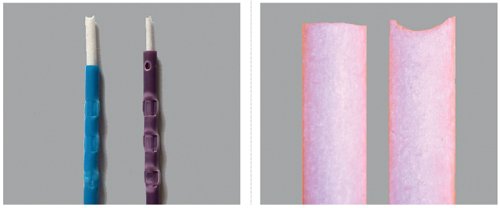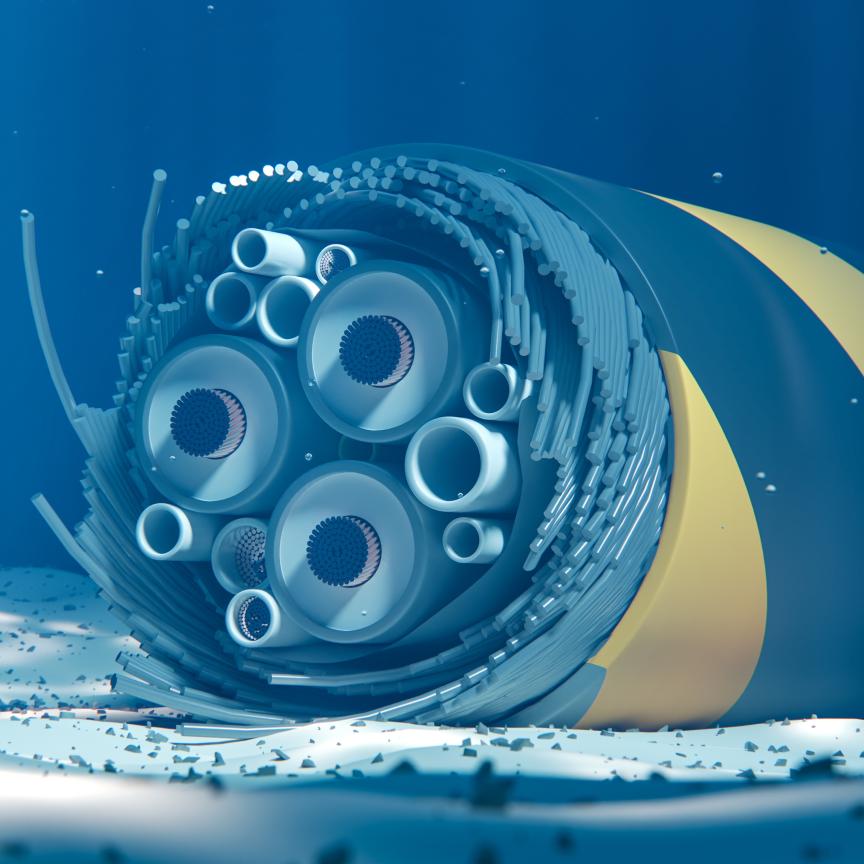Thirty years ago, two entrepreneurs — one a specialist in chemical distribution and the other an expert in aerosol packaging — joined forces to form MicroCare, a company specialising in aerosols to clean electronics. Founders Chris Jones and Peter Clapp soon cemented their position in the industry with the development of the patented TriggerGrip dispensing system, which reduced the environmental impact of printed circuit board cleaning while minimising both labour and cost.
Having built a significant reputation within the electronics industry, MicroCare gradually diversified into four distinct business segments. The focus on cleaning during the assembly and manufacturing of circuit boards remained unchanged, but MicroCare added expertise in cleaning medical devices and also a major emphasis on precision cleaning of delicate parts. The fourth segment, launched in 2008, brought the company into the fibre-optics industry under the brand of Sticklers.
‘Beyond a doubt, the success of the Sticklers product line has been phenomenal,’ said Mike Jones. ‘Our speciality is critical cleaning, so while some people in the fibre-optics industry may just see us as a new brand, behind that Sticklers logo are PhDs, a gaggle of chemical engineers and 50 years of critical cleaning expertise.’
‘Cleaning fibre connectors is one of the most critical applications we’ve ever seen at MicroCare. It’s really hard to do quickly, reliably and cost-effectively,’ added Wells. ‘To make it happen, we draw on our deep reservoir of technical skills. It’s not a case of taking one of our electronics cleaners and repackaging it for the fibre market.’
Mind over matter
According to Wells, in the years since Sticklers was first launched, there has been a sea change in the fibre-optics market in relation to critical cleaning. ‘When Sticklers first began, the most common response we received was that cleaning simply wasn’t part of companies’ budgets. People said they didn’t need to clean, that they didn’t bother to clean, or that they just couldn’t afford to clean,’ he explained. ‘Gradually that mind-set has shifted and today we have people lining up at our booth during exhibitions saying “I know I need to clean. Can you help me do it better, faster and less expensively?” Our answer is always “yes” and that’s where the Sticklers products really shine.’
Jones noted that there is a certain amount of cross-pollination between the sectors, with many of the company’s electronics customers beginning to enquire about how best to clean the fibre-optic transceivers being added onto circuit boards. Fibre itself is also becoming ubiquitous within the medical field, especially with regards to medical imaging as large data files move from an MRI or CAT scanner, for example, to a computer system.
‘It is fascinating to see,’ he observed. ‘From the perspective of the electronics world it’s a computer; telecoms professionals see it another photon coming down the fibre; but to the medical doctor it’s an image of liver that represents a breakthrough in diagnostics and treatments. It all adds to the growing market for fibre.’
Jones believes that there is incredible potential within the fibre-optics industry, given that cleaning is a necessity. And, as speeds continue to increase, cleaning will become even more important as the faster the fibre, the smaller the particle that can take it down.
‘The demand for mobile computing, for example, is almost infinite, and fibre is the only technology that makes this digital world we’re growing into possible,’ he said. ‘Companies that are putting in this fibre connectivity are learning pretty quickly that if they want their customers to have smooth and speedy video on demand, or consistent mobile data, then the fibre absolutely needs to be clean – it simply won’t work any other way.’
In the beginning
Looking back across the product line, Sticklers originally began with a number of chemicals and blends specifically designed to clean fibre-optic terminations. After listening to customer feedback, these blends were reformulated and the resulting solvent is unique in that – thanks to its non-hazardous and non-flammable formula – it is safe to use and store, and can be shipped globally without restriction.

‘Sticklers – and indeed all of MicroCare – is devoted to developing comprehensive answers for critical cleaning applications, whatever those requirements may be,’ explained Wells. ‘For example, companies that clean fibre often deal with a variety of connectors, and those connectors could be in remote locations all over the world. We realised that providing just a cleaning solution or just a cleaning tool wasn’t enough; we had to deliver a full and comprehensive package of convenient, consistent and reliable fibre-optic cleaning tools that could be guaranteed to reach any project.’
He continued: ‘That’s been a difficult road. Our research and development teams have been pushed to the limit but the result has been worth it. We now have a unique cleaning fluid that can be taken straight through airport security. We can clean any size and configuration of connector. And we can do all this at the lowest cost per connector.’
In addition to the cleaning fluid, the packaging itself is also the result of careful consideration. The patented three-way dispensing top, which allows the user to select spray, dampening or wetting modes, is the only one of its kind on the market, the company claims. Sticklers offers the only cleaning tools for expanded beam connectors. The Sticklers CleanWipes use the packaging of the wipe to eliminate static on the end-face, another first for the fibre industry. These small, innovative changes can have a disproportionately large impact for network operators, by improving network quality and driving down network operating costs, according to Wells.
Keep it clean
One technology that has already captured attention at the company is expanded beam, which is designed to provide robust transmission in harsh environments. The biggest markets for expanded beam connectors are broadcast, such as live news events and golf tournaments, aircraft (i.e., fly-by wire systems, in-seat entertainment systems) and military battlefield command-and-control systems. All of these environments are prone to very high costs should the systems fail.
The expanded beam connector is a type of non-contact connector that, as the name implies, uses a lens to expand and collimate the light from the tiny, 9-µm-diameter core of singlemode fibre to a beam several tens or hundreds of microns across. The larger interface makes the connector less sensitive to dirt, dust and alignment, and many people consider that this type of connector does not need cleaning.
‘Even the expanded beam people say you shouldn’t have to clean it but it turns out that you do have to. When there’s a military vehicle in a dust storm and they’re trying to get the communications to work then they need to clean,’ said Jones, adding that ‘they’ve designed a connector that’s almost impossible to clean, but we can clean it.’
Existing fibre cleaning tools were simply the wrong shape to remove liquids and particulate matter from the lens and the socket of an expanded beam connector. In contrast, the material in a Sticklers CleanStixx EB tool is shaped into a geometry that fits gracefully over the lens of the connector. The ‘ears’ on the sides of the tool make it possible to clean the total surface of the lens. ‘Making a tool like this that’s only one millimetre in diameter is quite an engineering feat,’ said Jones.

The expanded beam connector is just one example of how MicroCare has designed new cleaning products and processes for new connector designs. ‘We have samples of a new connector in our laboratory that’s half the size of the current LC connectors – and we can clean it,’ said Jones. ‘No other company can do that. If the manufacturer does decide to commercialise that connector, we will have the tools ready to keep it clean.’
Recognising the need to keep pace with the rapid changes in the industry, MicroCare has employed an industry specialist for its fibre-optic product line whose primary role involves charting what the industry is expecting and the direction it’s moving in. This ensures the company will have the technologies and products in place as soon as they’re needed.
Wells concluded by saying he believes the fibre-optic industry is at the same tipping point the electronics industry faced in the 1970s. ‘When we look back, decades from now, we’ll see this as just the beginning. The ramp up of capabilities that will emerge in the next 20 years is truly going to be eye-popping, and the message behind us is that if customers want to make it, then we’ll find a way to clean it.’
Beth Harlen is a freelance science writer based in Cambridge


